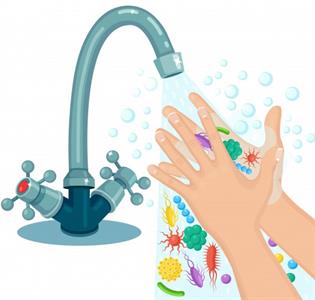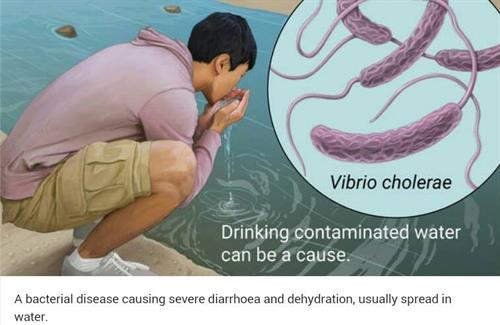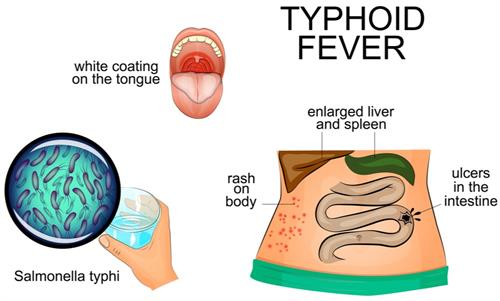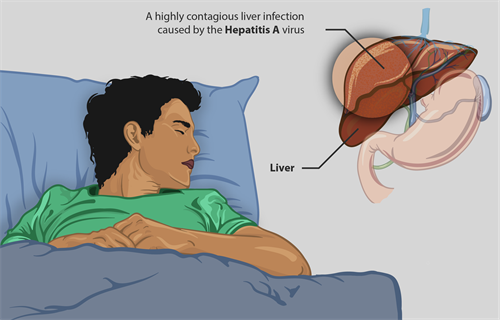
PUMPA - SMART LEARNING
எங்கள் ஆசிரியர்களுடன் 1-ஆன்-1 ஆலோசனை நேரத்தைப் பெறுங்கள். டாப்பர் ஆவதற்கு நாங்கள் பயிற்சி அளிப்போம்
Book Free DemoIntroduction:
Have you ever got sick after drinking water from an unhygienic place? This is because water contains harmful microbes which may cause the disease. Such type of diseases which are caused by consuming contaminated water resource is called water-borne diseases.
Microorganisms such as bacteria, virus are the principal causative agents for water-borne infectious disease. These diseases can be easily spread while bathing, washing, drinking water, or eating food exposed to contaminated water.

Picture showing the importance of handwashing as there is presence of so many microorganisms in our hands
Water provides the proper environment for the breeding and propagation of microbes. Many microorganisms are utilising water to spread harmful
water-borne diseases, which often occur after severe rainfall and snowfall.
Climate changes play an essential role in increasing the severity and frequency of spreading water-borne diseases. If every person on the planet could practice safe sanitation and hygiene and access to clean water, these diseases would not exist.
Some water-borne diseases are cholera, typhoid, infectious hepatitis, poliomyelitis, diarrhoea, etc.
The most common water-borne diseases and their causative microbial agents are given below.
Water borne diseases caused by bacteria:
1. Cholera
Cholera is an epidemic disease. During the \(19'th\) century, it spreads across the world, and millions of people died. It is an Acute diarrhoeal disease.
Causative organism: Vibrio cholerae
Mode of transmission: Contaminated food, water, oral route and through houseflies.
Tissue/Organ affected: Intestinal tract
Symptoms:
Mode of transmission: Contaminated food, water, oral route and through houseflies.
Tissue/Organ affected: Intestinal tract
Symptoms:
- Acute diarrhoea with watery rice stools
- Vomiting
- Muscular cramps
- Nausea and dehydration
Preventive and Control Measures: Hygienic sanitary condition, intake of Oral Rehydration Solution (ORS).

2. Typhoid
Causative organism: Salmonella typhi
Mode of transmission: Food and water contaminated with faeces of an infected person and through houseflies.
Tissue/Organ affected: Small intestine.
Symptoms:
Mode of transmission: Food and water contaminated with faeces of an infected person and through houseflies.
Tissue/Organ affected: Small intestine.
Symptoms:
- High fever
- Weakness
- Abdominal pain
- Headache
- Loss of appetite
- Rashes on the chest and upper abdomen
Preventive and Control Measures: Preventing contamination of food by flies and dust, improvement of basic sanitation, treatment with antibiotic drugs.

Water borne diseases caused by virus
Causative organism: Hepatitis A virus (HAV)
Mode of transmission: It is transmitted through contaminated water and food through the oral route.
Tissue/Organ affected: Inflammation of the Liver.
Symptoms:
- Nausea
- Anorexia ( an eating disorder)
- Acute fever(Yellow fever)
- Jaundice
Important!
Note: Anorexia
Anorexia nervosa is an eating disorder with symptoms like
Anorexia nervosa is an eating disorder with symptoms like
- Abnormal low body weight.
- Intense fear of gaining weight.
- Distorted perception of weight
Jaundice: Jaundice increases the bilirubin level (yellow-orange bile pigment), resulting in a condition that causes the skin, mucous membrane, and eyes white turn yellow.
Preventive and Control Measures: Prevention of food contamination, drinking chlorinated boiled water, personal hygiene will help to prevent the spread of Hepatitis A.
Vaccine: Prevention of hepatitis A is through vaccination with the hepatitis A vaccine.
Treatment: There is no specific treatment for hepatitis A. Recovery from symptoms following infection may be slow and may take several weeks or months.

Picture depicting the suffering of a Hepatitis A infected person due to the infection in the liver
- Cholera caused by Vibrio cholerae was first published by Robert Koch.
- Choleragen is a toxin produced by Vibrio cholerae, causing harmful effects.
- World Health Day – \(7th April\)
- World Malaria Day – \(25th April\)
- World AIDS Day – \(1st December\)
- World Anti -Tuberculosis Day – \(24th March\)
Important!
Reference:
https://www.freepik.com/premium-vector/washing-hands-with-soap-foam-scrub-gel-bubbles-water-tap-faucet-leak-get-rid-germs-bacteria-microbes-virus-personal-hygiene-daily-routine-concept-clean-body-cartoon-design_9884916.htm